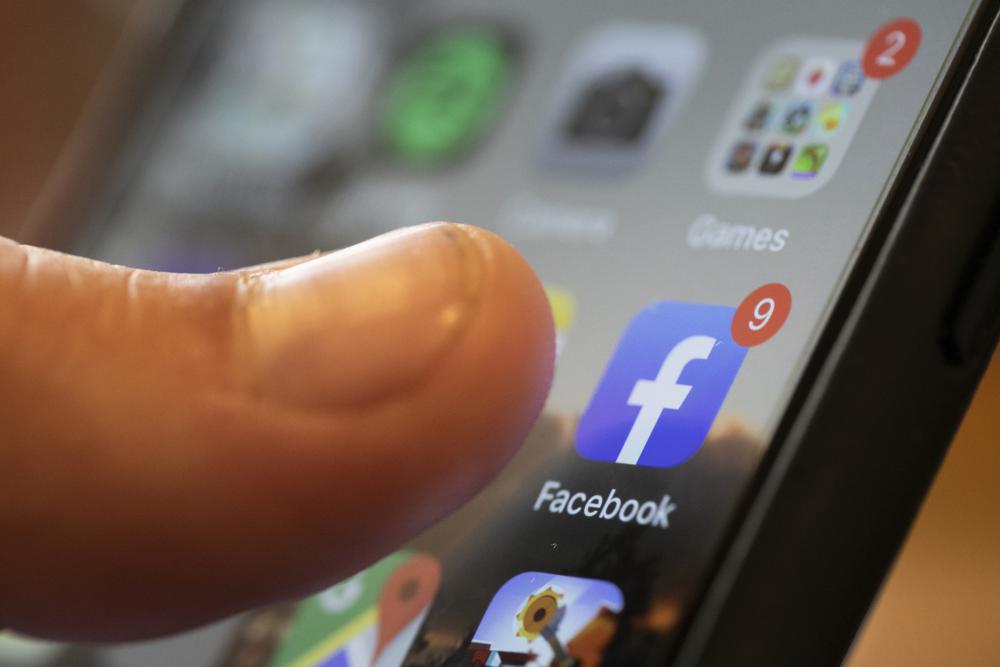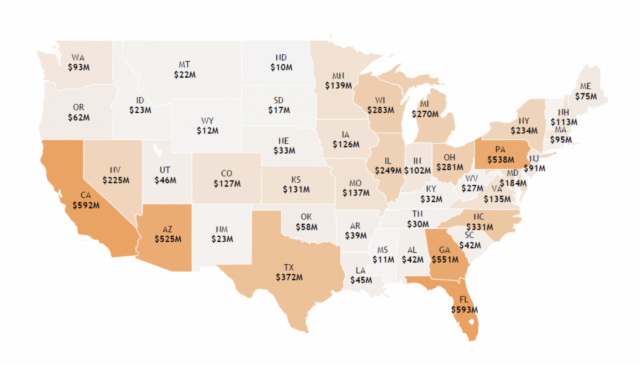
A new projection report from AdImpact predicts Florida will have the most political ad spending at $593 million for the 2022 election cycle, barely edging out California’s projected $592 million spend.
The report projects total ad spending across the U.S. to near $9 billion between gubernatorial races, congressional contests and down-ballot relays. That’s a pretty hefty amount for Midterms — the 2020 election cycle saw about $9 billion in political ad spending with the presidential ticket on the ballot, and AdImpact projects at least $8.9 billion will be spent this time around. For reference, the last Midterm cycle in 2018 saw spending reach $3.96 billion total, representing a 128% increase in spending between that cycle and the current one.
Why the boost? The report points to platforms like Facebook that campaigns can use as fundraising tools, since the media can market candidates to a “highly polarized electorate.” Donation sites like ActBlue and WinRed also make donating to candidates more accessible, according to the report.
While political spending has continued to increase, the last decade has seen leaping increases between each progressing cycle. The 2020 election cycle saw 244% growth from 2016 ad spending, both presidential election years.
Florida is one of the five states expected to account for one-third of the country’s total political spending.
Where to expect the ads
For the first time, AdImpact was able to offer a prediction for Connected TV (CTV) ad spending, which is played by devices that connects to — or is embedded in — a television to support content streaming like Xbox, PlayStation, Roku, Amazon Fire TV and Apple TV.
Since more people are moving from cable to streaming services, this new measurement is imperative to understanding ad spending — CTV is expected to grow 93% between 2020 and 2022 in the overall U.S. ad market.
Overall, AdImpact forecasts $6.1 billion in spending on TV and radio, $1.5 billion in CTV and $1.3 billion in Facebook and Google.

Senate race
Florida ranks fourth in the country for predicted Senate race spending, which is set at $214 million. Nationally, Georgia is expected to see the highest Senate ad spending of any state at $244 million.
Since the Senate is split down party lines, this year’s Senate races will feature heavy ad buys as Republicans battle to reclaim seats and Democrats try to retain and gain.
The ad buys for Senate races are projected to reach $2.38 billion in spending across the country. AdImpact predicts Senate spending will decrease from 6% in 2020, but show a 140% increase from 2018. The report also expects 15% of Senate race spending to be directed toward CTV and 13% on Facebook and Google marketing.
Floridians head into the Senate election with two front-runners — incumbent Republican U.S. Sen. Marco Rubio and Democratic U.S. Rep. Val Demings.
Leading Democratic candidate Demings is hoping to unseat Rubio, who has represented Florida in the Senate since 2011. The two are neck-and-neck in fundraising — Demings’ campaign raised more than $10 million in the first quarter of 2022, and Rubio grabbed $5.8 million. That put both of them over $30 million raised in the 2022 U.S. Senate money chase, making the Rubio-Demings contest the only Senate battle in the country where both candidates are anywhere near that stratosphere of fundraising.
Both candidates also have been spending furiously on their campaigns, both starting April with about $13 million on hand.
While the 2022 General Election is still more than six months away, Republican incumbents remain heavy favorites in a leading prediction market — Rubio maintains a commanding lead over his Democratic opponent on the PredictIt platform. These advantages have expanded over time and show no immediate indication of reversal.
Governor’s race
Florida ranks third for gubernatorial ad spending, expected to reach $166 million by November.
Overall, AdImpact predicts that national gubernatorial ad spending will increase by 110% compared to the 2018 election, a difference between $1.1 billion (2018) and an anticipated $2.33 billion (2022). About 16% of the total spending is expected to go to CTV, and another 12% on Facebook and Google.
Florida’s gubernatorial contest is hot, with three leading Democrats competing for a chance to unseat powerful Republican incumbent Ron DeSantis.
DeSantis has strong fundraising numbers, raking in more than $10 million in April alone for his re-election bid. He has more than $105 million in the bank heading toward the General Election, giving him plenty of room for ad spending.
The Governor’s re-election efforts continue to be in an entirely different league than those of the Democrats seeking a shot at him in November. U.S. Rep. Charlie Crist, the leading Democrat in fundraising, topped $1 million in April, bringing his total to more than $9.2 million. Agriculture Commissioner Nikki Fried and state Sen. Annette Taddeo fall behind Crist in fundraising, with Fried totaling out at about $5.1 million and Taddeo nearing the $1 million mark.
Along with his unmatched funding, DeSantis is still leading over Democratic counterparts on the PredictIt platform.
U.S. House races
The Sunshine State came in fourth among the states for House ad spending, which AdImpact predicts will reach $75 million.
Nationally, the report expects a 40% increase from 2020. But because of redistricting, the platform admits this prediction is the most uncertain of the group. AdImpact expects to see $1.67 billion in ad spending for 2022 U.S. House races, with similar spending to the Senate — 17% is expected to be put toward CTV and 12% to Facebook and Google.
Florida is one of several states currently facing the unpredictability of redistricting. The state is facing lawsuits over the current map, proposed and signed by Gov. DeSantis. Civil liberty organizations claim that the map violates the U.S. Constitution by erasing minority districts.
One case is currently working its way through state courts. Plaintiffs in that suit allege the map runs counter to the Florida Constitution. A circuit court judge this week ordered DeSantis’ map be blocked and swapped with alternative cartography in North Florida’s districts. That order is on hold as the state appeals the decision.



